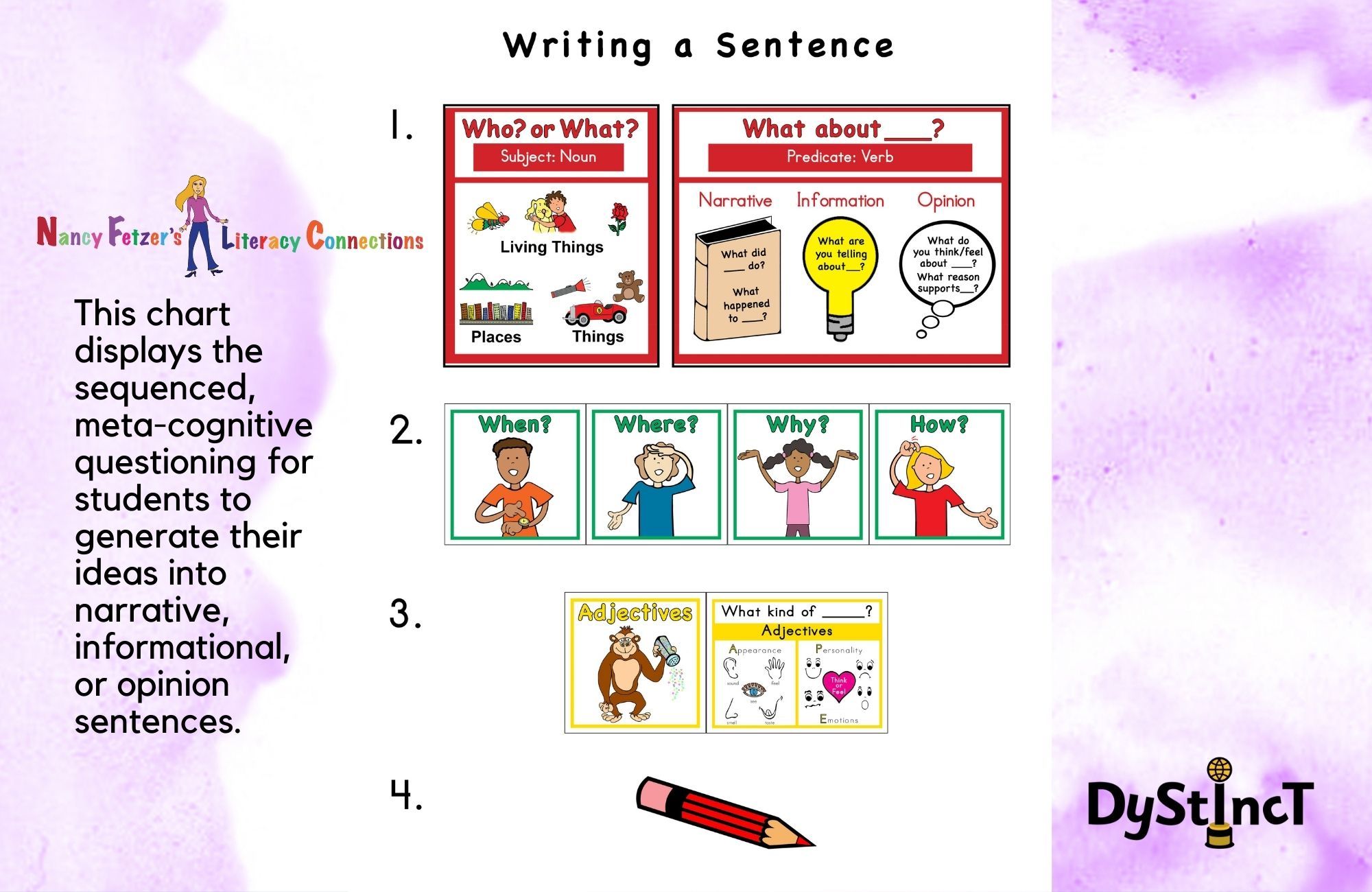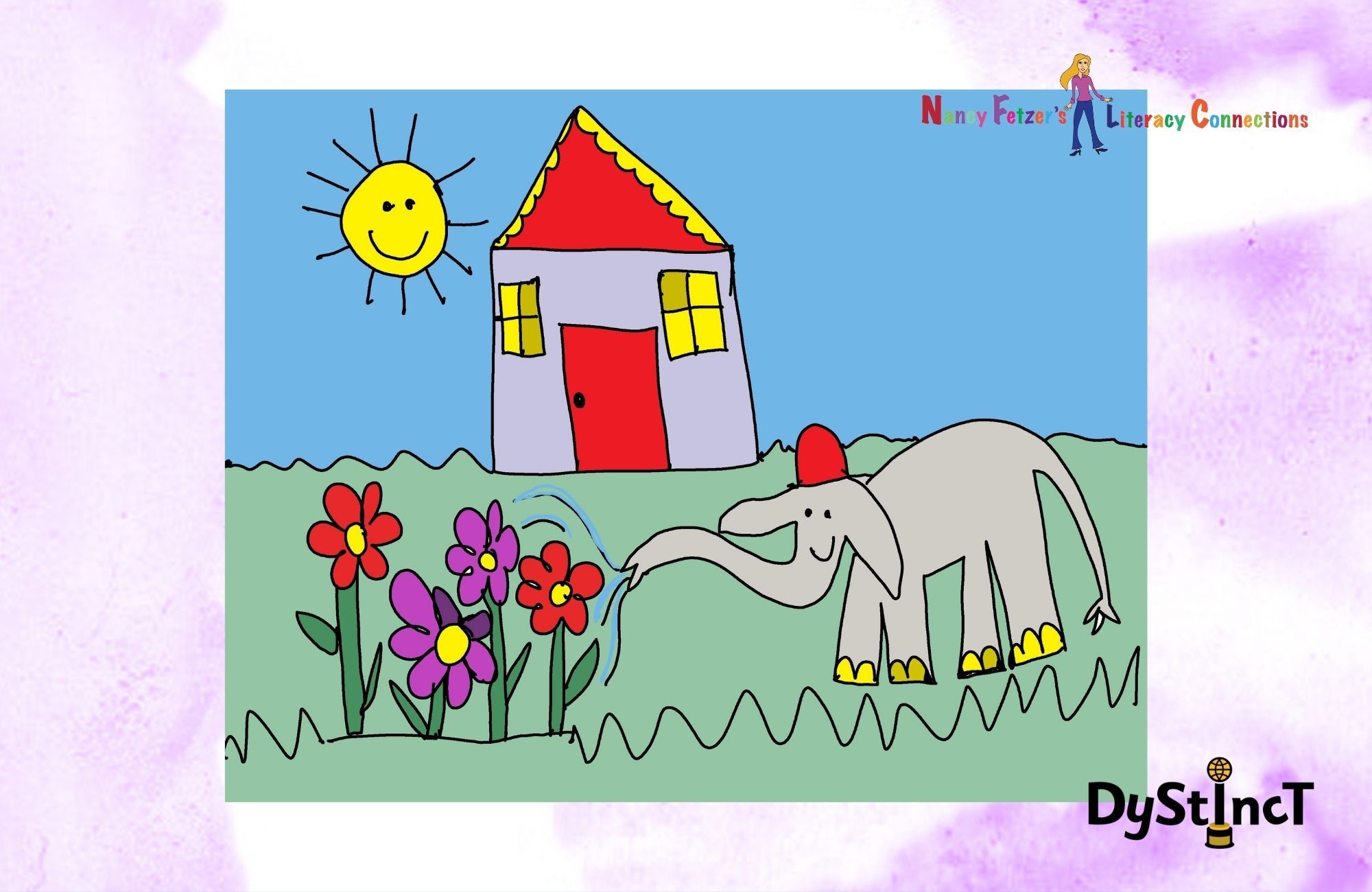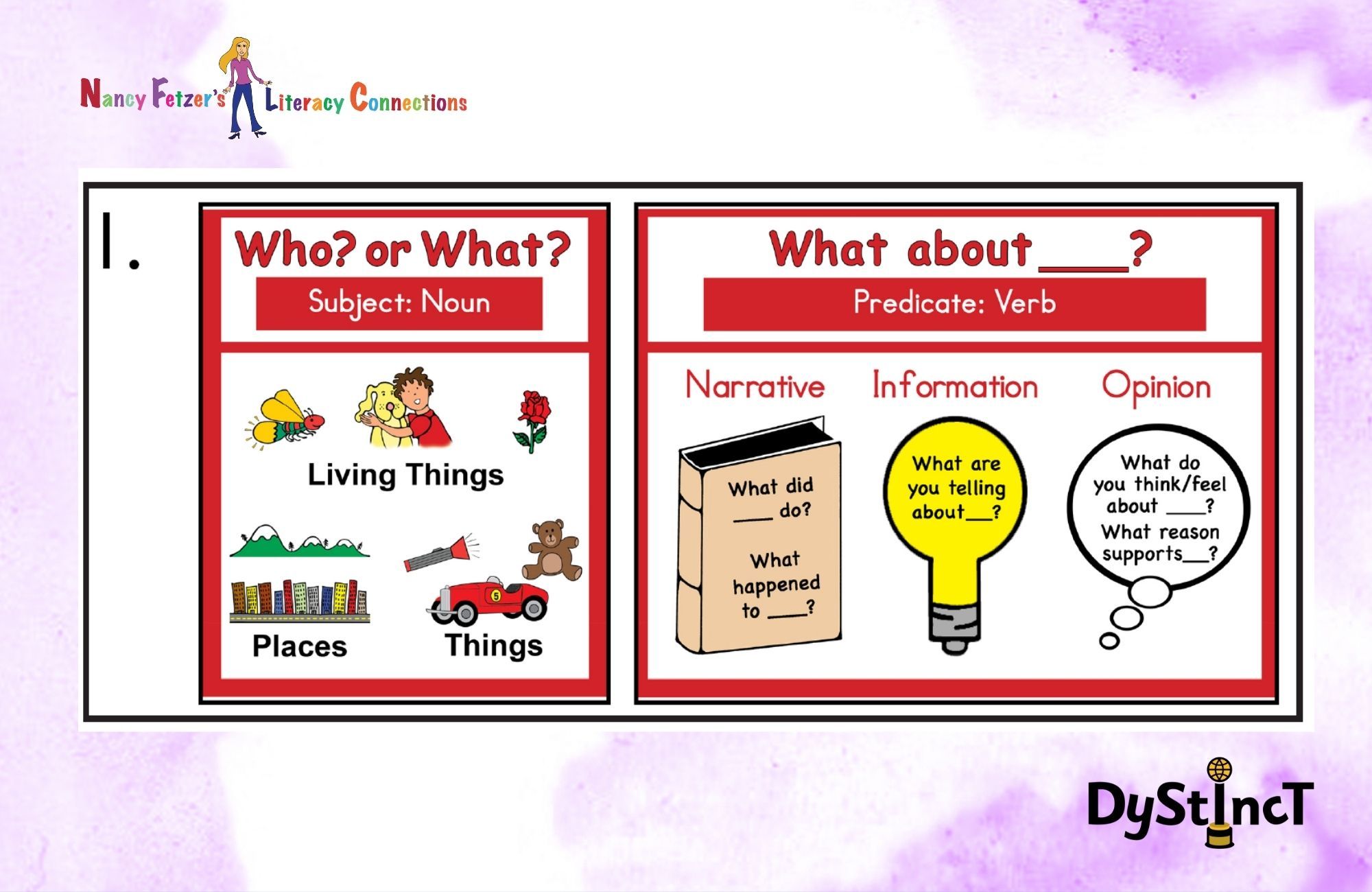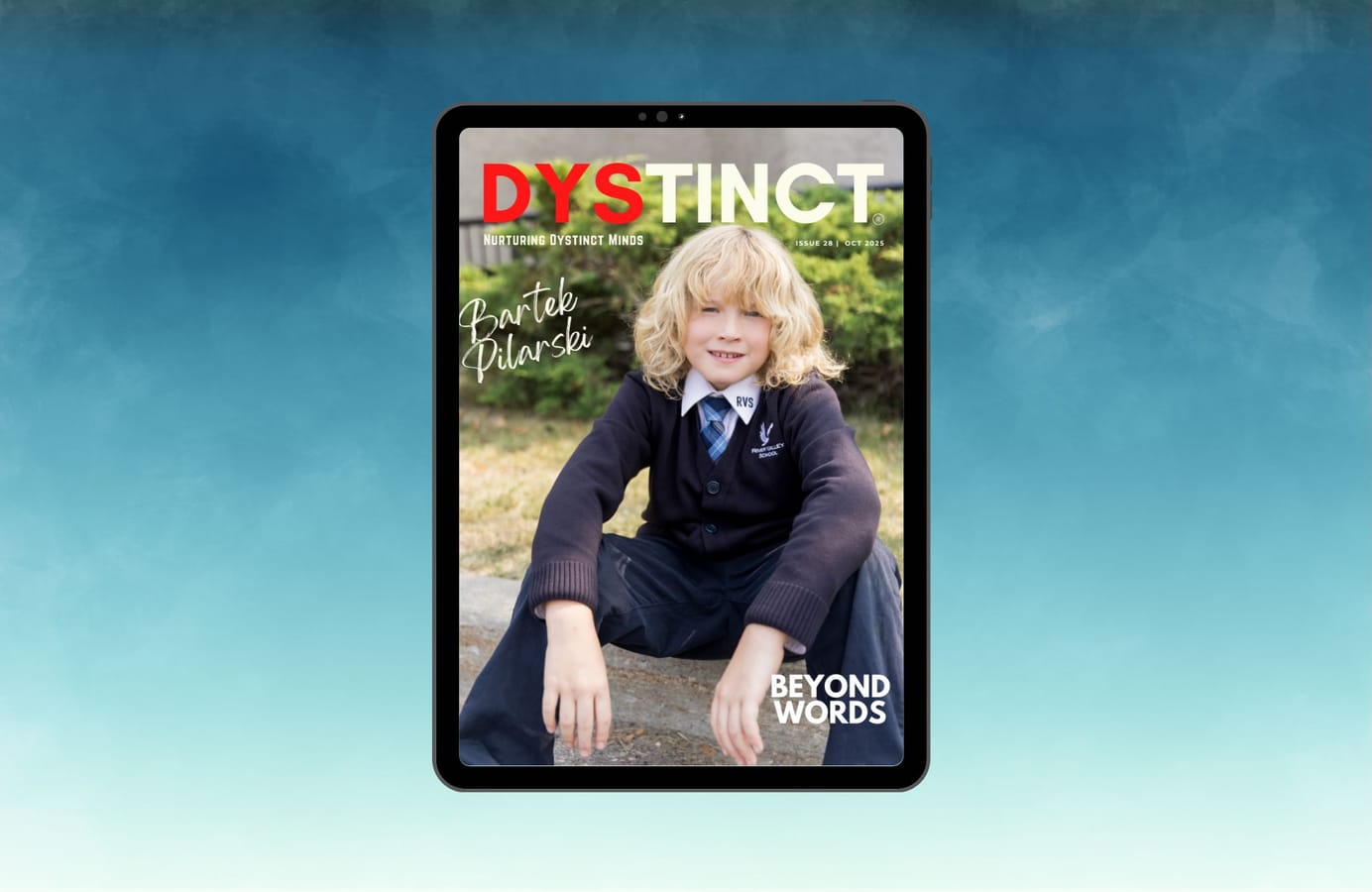
Issue 15: Writing Sensational Sentences | Nancy Fetzer
Nancy Fetzer utilizes her visual step-by-step “Writing a Sentence” chart to demonstrate how to explicitly teach students to write sensational narrative sentences.
In this article, I will utilize my visual step-by-step “Writing a Sentence” chart to demonstrate “how-to” explicitly teach students to write sensational narrative sentences.
Does this sound familiar? Your child is upset, stressed, and flustered because s/he is tasked with the assignment to write a multiple-paragraph essay yet struggles to write complete sentences. According to evidenced-based research, “While all writing requires conscious effort and a great deal of practice in composing, developing and analyzing ideas, proficient and effective writing also hinges on the ability to craft formal, and well-constructed sentence structures.” (Graham, 2006; Scardamalia & Bereiter, 1986; Strong, 1986).
“Writing a Sentence” Chart
“Writing a Sentence” Chart
This chart displays the sequenced, meta-cognitive questioning for students to generate their ideas into narrative, informational, or opinion sentences.

Components of the Writing Lesson
Components of the Writing Lesson
Steps
To demonstrate this technique, a scripted lesson is utilized to explain to the teacher/facilitator how to implement the four steps on the “Writing a Sentence” chart.
Idea pictures
Writers always begin with an idea, something to write about. The following writing lesson begins with a drawing (representing an idea) from which a student or students generate sentences. Ultimately, this process should be mastered so students have ideas in their heads that are easily conveyed in well-crafted sentences.
Coaching
Each of the four steps includes teaching points and interventions the facilitator/ teacher may need to support the student(s).
Language Rehearsals
Students are encouraged to repeatedly rehearse and physically pantomime their sentences throughout the lessons. Language development is a critical factor to writing success.
Narrative Sentence Lesson
Narrative Sentence Lesson
In this example, a student’s drawing of an elephant watering her plants was displayed as the idea for the narrative sentence lesson. A story picture always needs at least one character, a setting, and actions (the character is doing something).

Step 1 : Subject and Predicate Questions
Step 1 : Subject and Predicate Questions
Background
Every complete sentence contains a subject and a predicate.
Subject
The subject of a sentence is a noun, the living thing, place, or thing the sentence is mostly about. The subject is doing or being something.
Predicate
A predicate is the part of a sentence that tells what the subject is or does. Predicates always include a verb and may also contain additional words and phrases.
Scripted Lesson
Teacher: We will follow these four steps on our “Writing a Sentence” chart to teach our brains how to write sensational narrative sentences.
Teacher: (Point to the chart.) In Step One, there are two red boxes. The red color means, “Red Light! Red Light! Stop!” We need to stop and ask the questions in the red boxes to form a complete sentence. A complete sentence should tell our reader what our story picture is mostly about.


Student: Ellie the elephant.
Teacher: (Point to “Subject: Noun” on the chart.) Yes, Ellie the elephant is the subject of our sentence. She is who the story picture is mostly about. A who or what in a sentence is a noun (point to the noun box). Nouns are living things, places, or things. Ellie is a living thing. She is who our sentence is mostly about.
Teacher: Next, we will ask the “What about ___?” question. (Point to “What about___?” on the chart.) What about Ellie the elephant? We are writing a story sentence, so we will ask the narrative question for this part. (Then point to the narrative questions on the chart.) What did Ellie the elephant do?

Student: She put water on her flowers.
Teacher: Let’s combine both parts together to form our sentence.
Student: Ellie the elephant she put water on her flowers.
Teacher: Are “Ellie the elephant” and “she” the same character, the same subject of our sentence?
Student: Yes
Teacher: You can only name Ellie once as the subject, “the elephant”, or “she” is naming her twice. Before you choose one, remember that your words are painting a picture in the reader’s mind. Which words will make the reader see your character best, “Ellie the elephant” or “she”?
Student: Ellie the elephant.
Teacher: Yes, “Ellie the elephant” makes my mind see the elephant, “she” does not. Let’s go back and say your sentence.
Student: Ellie the elephant put water on her flowers.
Teacher: Excellent. Your words match your story picture. Oh my, look! Muscle Man is jumping into your sentence. (Show Muscle Man puppet.)

Muscle Man: Your sentence is amazing, but now Muscle Man is here to make it even more powerful by choosing the best verb for your sentence. (Point to “Predicate: Verb” on the chart.) The verb kicks off the predicate. That’s the part of your sentence that tells what the subject is doing or what the subject is. That’s why the verb is the most powerful part of speech; it paints a picture of what Ellie the elephant is doing.
Teacher: In our sentence, “put” is the action. “Put” is a verb. Let’s all brainstorm and act out different verbs that will create a more precise or exact picture of our story.
“Put.” (Physically pretend to act out putting water on flowers. Make a trunk using one arm and scoop up water to put on the flowers.)
“Sprayed.” (Make a trunk and pretend the water is spraying like a sprinkler.)
“Squirted.” (Make a trunk and pretend the water is shooting out and hitting the flowers.)
Which verb matches the picture best?
Student: Sprayed.
Teacher: Yes, sprayed is the most powerful verb or action word. It matches our story picture best. Sprayed makes me think of a hose, like Ellie’s long nose watering the flowers. Let’s say our complete sentence.
Student: Ellie the elephant sprayed water on her flowers.
Step 2 : Modifiers or Extenders
Step 2 : Modifiers or Extenders
Background
Once the subject and predicate are formed, writers often add a word or a group of words to convey more information to their readers and to modify or describe different parts of their sentences. In this step, students learn to ask the “When?”, “Where?”, “Why?” and “How?” questions to include needed information in their sentences. For example: “When? When did Ellie the elephant spray water on her flowers?”
This post is for paying subscribers only
SubscribeAlready have an account? Log in


